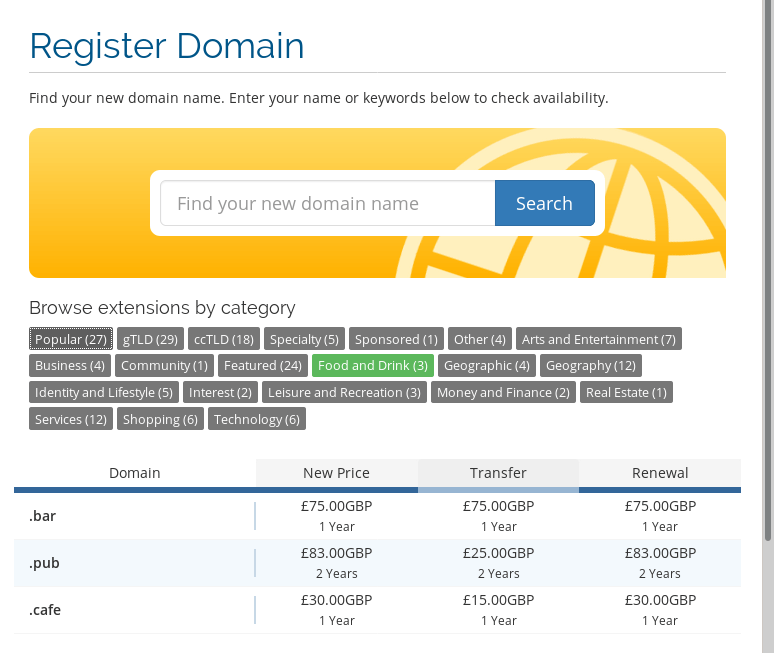Choosing the perfect domain
Last updated: 9 March 2022
Until a few years ago there were relatively few domain extensions. Most people bought a .co.uk or com domain. These domains are still very popular, but there are now hundreds of new extensions to choose from. In the UK we got the new .uk suffix, and there are also extensions such as .beer and .lol.
The anatomy of a domain
Domain names are made up of different parts. The top-level domain (TLD) is the extension, such as .uk or .com. The part before the extension is the name. So, in the domain example.com, the name is example and the extension is .com.
In case you are wondering, www is not part of a domain name – it is a (very common) subdomain. You can’t register a subdomain, but you can host a subdomain once you own a domain. The www subdomain is usually created automatically when a hosting package is set up.
Finding extensions
Our Register a new domain page can help you find a suitable domain. The Browse extensions by category section shows the available extensions. By default it only shows the most popular extensions but many other categories are available. For instance, you can get a .bar, .pub or .cafe domain.

Image: fancy a .bar, .pub or .cafe domain?
Most of the categories are fairly obvious. However, there are two that need an explanation:
- ccTLDs are country code top-level domains. These domains are reserved for countries and territories. For instance, domains ending in .uk are managed by a body in the United Kingdom (Nominet). You can usually buy these domains. For instance, the extension .tv is fairly popular in the UK, even though it is the top-level domain for Tuvalu. However, there can be restrictions. For instance, citizens outside the European Union can’t buy a .eu domain.
- gTLDs are generic top-level domains. These domains include traditional extensions such as .com as well as hundreds of recently created extensions.
You can view all TLDs we offer on our available domain extensions page.
Variations on a domain
The Register Domain page tells you if a domain is available. If the domain has already been taken the page lists a number of similar domains that are available. Often, adding a word or putting a dash between different words does the trick. For instance, as at March 2022 the domain yummiefood.com has been registered but yummiefood.co.uk is available.
Valid domain names
Domain names have fairly strict rules. For most top-level domains the rules are as follows:
- The name has to between 3 and 63 characters.
- Stressed vowels (à, é etc.) and special characters (£, + etc.) are not allowed.
- Dashes are allowed, but not as the first or last character.
- Numbers are allowed.

